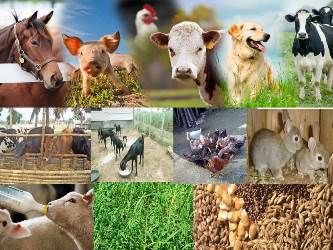



Received: 01-Jul-2022, Manuscript No. GJASLPAB-22-73847; Editor assigned: 04-Jul-2022, Pre QC No. GJASLPAB-22-73847 (PQ); Reviewed: 21-Jul-2022, QC No. GJASLPAB-22-73847; Revised: 29-Jul-2022, Manuscript No. GJASLPAB-22-73847 (R); Published: 05-Aug-2022, DOI: 10.35841/2408-5499.22.10.168
The demand for meat, particularly chicken meat (broiler), is rising quickly day by day as a result of growing urbanisation and industrialisation. As a result, it is today a very successful agricultural industry. When all input costs for feeding are taken into account, they can make up as much as 60%–70% of overall costs, yet some strains exhibit higher feed efficiency and dressing percentages with astonishingly low mortality rates. In addition, strain, season, and age have a big impact on the output and performance of broiler chickens. If these elements are taken into consideration, the poultry industry may become successful. In this context, numerous researches have been conducted in India and overseas, and the current study examined the effects of strain, age, and season on broiler chicks.
One of the primary traits of broiler chicks, which results from their ravenous appetite, is their rapid rate of growth. Although it is probably true that the energy content of the food affects the appetite of broilers, the ideal energy content of the diet is still up for debate. Therefore, optimizing the production costs may be accomplished by taking into account the real energy needs of chicks and taking into account physiological and environmental changes in relation to the values shown in the chick's requirements tables. The energy needs of birds have been accurately estimated by poultry nutritionists using statistical models. Models for estimating energy take into account a variety of variables that affect a bird's need for energy.
However, because these estimative models express energy requirements as kcal day-1, it appears vital to know the quantity of chick daily feed intake in various stages of growth as this can help to formulate diets with the ideal energy levels. Additionally, FI models can be used in qualitative and quantitative feed restriction programmers to determine the best feed distribution. This study attempted to use four quadric regression models estimating daily feed intake relative to chick's daily body weight because of the significance of an accurate assessment of birds' daily feed intake and its impact on making these estimative models more useful.
Feeding behavior affects broiler growth performance and carcass quality regardless of genetic uniformity. 192 dayold chicks from the Hubbard, Kucbor, Arbor Acre, and Pawl broiler strains were divided into groups that received ad libitum, 2 hours, 4 hours, and 6 hours of feed restriction in order to examine the effects of feed restriction on the broiler strains in north central Nigeria. Data on growth efficiency, carcass indices, and costbenefit analysis showed that Hubbard, which was fed a restricted diet for 4 hours, gained the least amount of body weight (259 g), had the highest feed intake (1,374.3 g), while Kucbor, which was fed ad libitum, gained the least amount (259 g). The broiler strains' values for body length, breast girth, and thigh length were from 38.6 cm to 43.6 cm, 29.5 cm to 38.5 cm, and 7.7 cm to 9.8 cm, respectively.
In order to ascertain the descriptive values of the primary production metrics of flocks and evaluate the relationship between these measurements and associated management parameters in Japanese commercial broiler farms. A total of 183 farms contributed 5060 flock records to the data set. The following formula was used to determine the production index: liveability x average daily gain/feed conversion ratio x 10. The production index was 283.9 ± 28.83 on a mean (± SD) basis. Low broiler breeder age, flock placement in the summer, and high stocking density were management variables strongly associated with a lower production index (P< 0.05). Regarding an interaction for the production index, flocks with a low broiler breeder age had a lower production index than flocks with a high stocking density (P <0.05). The current study found several elements that affect flock performance. By enhancing management, the information from this analysis will help improve flock performance.